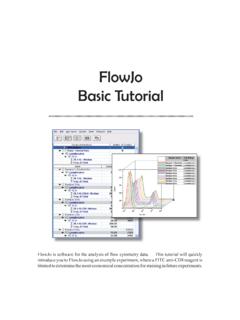Transcription of TECHNOLOGICAL CHANGE AND THE ENVIRONMENT - …
1 Chapter 11 TECHNOLOGICAL CHANGE AND THE ENVIRONMENTADAM B. JAFFED epartment of Economics, Brandeis University andNational Bureau of Economic Research, Waltham, MA 02454-9110, USARICHARD G. NEWELLR esources for the Future, Washington, DC 20036, USAROBERT N. STAVINSJohn F. Kennedy School of Government, Harvard University, Cambridge, MA 02138, USA andResources for the Future, Washington, DC 20036, USAC ontentsAbstract462 Keywords4621. Introduction4632. Fundamental concepts in the economics of TECHNOLOGICAL Schumpeter and the gale of creative Production functions, productivity growth, and biased TECHNOLOGICAL TECHNOLOGICAL CHANGE and endogenous economic growth4683. Invention and The induced innovation Neoclassical induced Market failures and policy Empirical evidence on induced innovation in pollution abatment and Effects of instrument choice on invention and Categories of environmental policy instruments and criteria for Theoretical Empirical Induced innovation and optimal environmental The evolutionary approach to Porter s win-win hypothesis4854.
2 Microeconomics of diffusion489 Handbook of Environmental Economics, Volume 1, Edited by M ler and Vincent 2003 Elsevier Science All rights Jaffe et Increasing returns and technology Diffusion of green Effects of resource prices and technology Effects of inadequate information, agency problems, and Effects of increasing Effects of instrument choice on Theoretical Empirical analyses5015. Conclusion504 Acknowledgements506 References507 AbstractEnvironmental policy discussions increasingly focus on issues related to technologicalchange. This is partly because the environmental consequences of social activity are fre-quently affected by the rate and direction of TECHNOLOGICAL CHANGE , and partly becauseenvironmental policy interventions can themselves create constraints and incentives thathave significant effects on the path of TECHNOLOGICAL progress. This chapter summarizescurrent thinking on TECHNOLOGICAL CHANGE in the broader economics literature, surveysthe growing economic literature on the interaction between technology and the environ-ment, and explores the normative implications of these analyses .
3 We begin with a briefoverview of the economics of TECHNOLOGICAL CHANGE , and then examine theory and em-pirical evidence on invention, innovation, and diffusion and the related literature on theeffects of environmental policy on the creation of new, environmentally friendly tech-nology. We conclude with suggestions for further research on TECHNOLOGICAL CHANGE andthe CHANGE , induced innovation, environmental policy, invention, diffusionJEL classification: D24, D83, O14, O3, Q25, Q28, Q4Ch. 11: TECHNOLOGICAL CHANGE and the Environment4631. IntroductionIn the last decade, discussions of environmental economics and policy have becomeincreasingly permeated by issues related to TECHNOLOGICAL CHANGE . An understanding ofthe process of TECHNOLOGICAL CHANGE is important for two broad reasons. First, the envi-ronmental impact of social and economic activity is profoundly affected by the rate anddirection of TECHNOLOGICAL CHANGE .
4 New technologies may create or facilitate increasedpollution, or may mitigate or replace existing polluting activities. Further, because manyenvironmental problems and policy responses thereto are evaluated over time horizonsof decades or centuries, the cumulative impact of TECHNOLOGICAL changes is likely to belarge. Indeed, uncertainty about the future rate and direction of TECHNOLOGICAL CHANGE isoften an important sensitivity in baseline forecasts of the severity of environmentalproblems. In global climate CHANGE modeling, for example, different assumptions aboutautonomous improvements in energy efficiency are often the single largest source ofdifference among predictions of the cost of achieving given policy objectives [Weyant(1993), Energy Modeling Forum (1996)].Second, environmental policy interventions themselves create new constraints andincentives that affect the process of TECHNOLOGICAL CHANGE . These induced effects of en-vironmental policy on technology may have substantial implications for the normativeanalysis of policy decisions.
5 They may have quantitatively important consequences inthe context of cost-benefit or cost-effectiveness analyses of such policies. They mayalso have broader implications for welfare analyses , because the process of technologi-cal CHANGE is characterized by externalities and market failures with important welfareconsequences beyond those associated with environmental goals in this chapter are to summarize for environmental economists currentthinking on TECHNOLOGICAL CHANGE in the broader economics literature; to survey thegrowing literature on the interaction between technology and the ENVIRONMENT ; and toexplore the normative implications of these analyses . This is a large task, inevitablyrequiring unfortunate but necessary omissions. In particular, we confine ourselves tothe relationship between technology and problems of environmental pollution, leavingaside a large literature on TECHNOLOGICAL CHANGE in agriculture and natural resources of the significant environmental implications of fossil fuel combus-tion, we include in our review some of the relevant literature on TECHNOLOGICAL changeand energy 2 provides a brief overview of the general literature on the economics oftechnological CHANGE .
6 It is intended less as a true survey than as a checklist of issues1 See the recent surveys by Sunding and Zilberman (2000) and Ruttan (2000).2 Because our focus istechnologicalchange, we also exclude the growing literature on political and policyinnovation and the evolution of social norms. See Chapters 8 ( The Political Economy of EnvironmentalPolicy ) and 3 ( Property Rights, Public Goods, and the ENVIRONMENT ). Jaffe et the interested reader can use to find entry points into the 3 dis-cusses invention and innovation, including the idea of induced innovation wherebyenvironmental policy can stimulate the creation of new environmentally friendly tech-nology. Section 4 focuses on issues related to technology diffusion. Section 5 providesconcluding observations and suggestions for future Fundamental concepts in the economics of TECHNOLOGICAL changeThe literature pertaining to the economics of TECHNOLOGICAL CHANGE is large and sub-areas (with references to surveys related to those areas) include: the theoryof incentives for research and development [Tirole (1988), Reinganum (1989), Geroski(1995)]; the measurement of innovative inputs and outputs [Griliches (1984, 1998)];analysis and measurement of externalities resulting from the research process [Griliches(1992), Jaffe (1998a)]; the measurement and analysis of productivity growth [Jorgen-son (1990), Griliches (1998), Jorgenson and Stiroh (2000)]; diffusion of new technol-ogy [Karshenas and Stoneman (1995), Geroski (2000)]; the effect of market structureon innovation [Scherer (1986), Sutton (1998)].
7 Market failures related to innovation andappropriate policy responses [Martin and Scott (2000)]; the economic effects of publiclyfunded research [David, Hall and Toole (2000)]; the economic effects of the patent sys-tem [Jaffe (2000)]; and the role of TECHNOLOGICAL CHANGE in endogenous macroeconomicgrowth [Romer (1994), Grossman and Helpman (1994)]. In this section, we present aselective overview designed to provide entry points into this large Schumpeter and the gale of creative destructionThe modern theory of the process of TECHNOLOGICAL CHANGE can be traced to the ideasof Josef Schumpeter (1942), who saw innovation as the hallmark of the modern capi-talist system. Entrepreneurs, enticed by the vision of the temporary market power thata successful new product or process could offer, continually introduce such may enjoy excess profits for some period of time, until they are displaced by sub-sequent successful innovators, in a continuing process that Schumpeter called creativedestruction.
8 Schumpeter distinguished three steps or stages in the process by which a new, supe-rior technology permeates the the first developmentof a scientifically or technically new product or may be patented,3 For surveys of other aspects of the economics of TECHNOLOGICAL CHANGE , see Solow (1999) on neoclassicalgrowth theory, Grossman and Helpman (1995) on technology and trade, Evenson (1995) on technology anddevelopment, and Reinganum (1989) on industrial organization theory of innovation and Schumpeterian trichotomy focuses on the commercial aspects of TECHNOLOGICAL CHANGE . As discussedin Section below, the public sector also plays an important role. In addition, a non-trivial amount ofbasic research which one might think of as prior even to the invention stage is carried out by private firms[Rosenberg (1990)].Ch. 11: TECHNOLOGICAL CHANGE and the Environment465though many are not. Either way, most inventions never actually develop into aninnova-tion, which is accomplished only when the new product or process is commercialized,that is, made available on the firm can innovate without ever inventing, ifit identifies a previously existing technical idea that was never commercialized, andbrings a product or process based on that idea to market.
9 The invention and innova-tion stages are carried out primarily in private firms through a process that is broadlycharacterized as research and development (R&D).6 Finally, a successful innovationgradually comes to be widely available for use in relevant applications through adop-tion by firms or individuals, a process labeleddiffusion. The cumulative economic orenvironmental impact of new technology results from all three of these stages,7whichwe refer to collectively as the process of TECHNOLOGICAL Production functions, productivity growth, and biased TECHNOLOGICAL changeThe measurement of the rate and direction of TECHNOLOGICAL CHANGE rests fundamentallyon the concept of the transformation function,T(Y,I,t) 0,(1)whereYrepresents a vector of outputs,Irepresents a vector of inputs, andtis (1) describes a production possibility frontier, that is, a set of combinations ofinputs and outputs that are technically feasible at a point in time.
10 TECHNOLOGICAL changeis represented by movement of this frontier that makes it possible over time to use giveninput vectors to produce output vectors that were not previously precisely, an invention may form the basis of atechnologicalinnovation. Economically importantinnovations need not be based on new technology, but can be new organizational or managerial forms, newmarketing methods, and so forth. In this chapter, we use the wordinnovationas short-hand for the moreprecisetechnological regarding R&D expenditures of firms are available from the financial statements of publicly tradedfirms, if the expenditure is deemed material by the firm s auditors, or if the firm chooses for strategicreasons to report the expenditure [Bound et al. (1984)]. In the United States, the government carries outa census of R&D activity, and reports totals for broad industry groups [National Science Board (1998)].















